

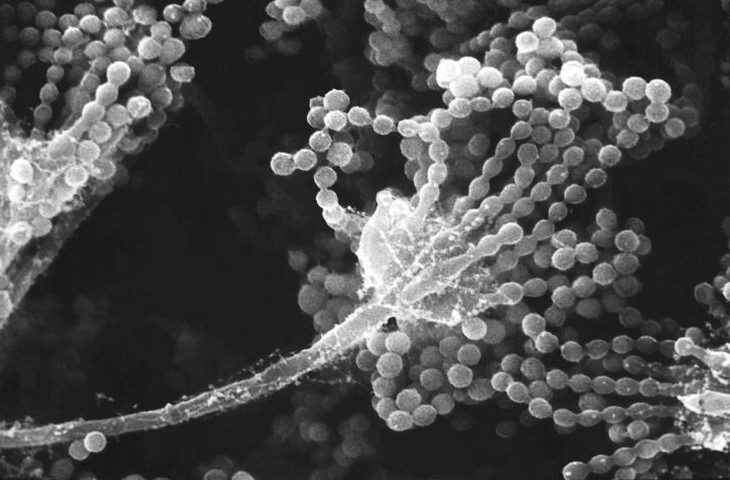
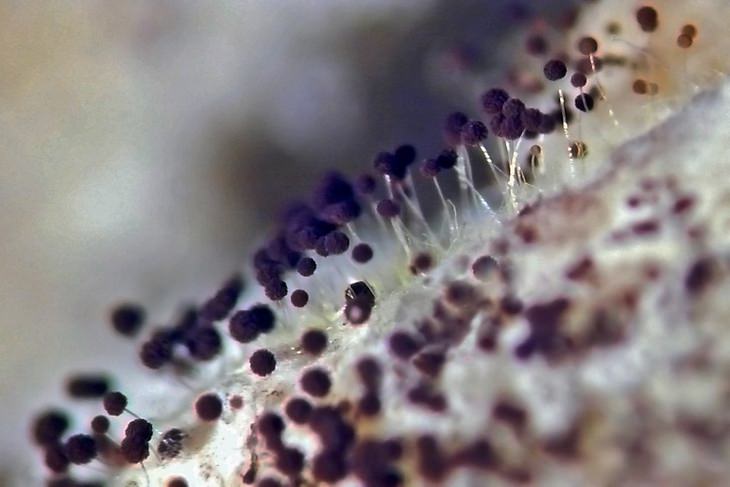 Source: Sulev Kuuse
Source: Sulev KuusePolyurethane is a plastic that is used in manufacturing foam insulation, varnish, sponges and synthetic leather. A. tubingensis is not the first type of microorganism found that can break polyurethane down, but the rate of biodegradation that was observed by the Pakistani team was especially fast, taking two months for the mold to absorb the plastic.
The results of the research fill the team with hope that a. tubingensis could be used consciously in removing polyurethane waste through biodegradation, and we can only hope they are right.
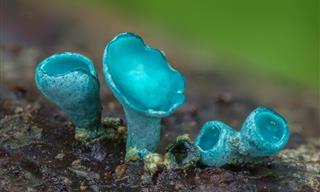
The Microscopic World You Never Knew Existed in 15 Photos
Take a look at the captivating microscopic world of forests, hidden in plain sight, through 15 photos by the talented self-taught photographer Alison Pollack.
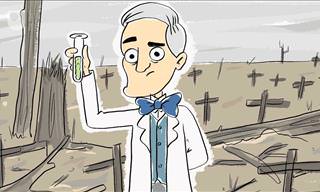 1:44
1:44
The Accidental Discovery of the World’s First Antibiotic
Not too long ago, it was fairly common to die of the simplest of wounds due to bacterial infection. Penicillin changed everything.
 7:02
7:02
These Eco-Friendly Inventions Will Change the World
Take a look at some incredible eco-friendly inventions that can save our planet.
 7:05
7:05
These Mushrooms Can Be Made Into ANYTHING...
This material can be turned into styrofoam, leather, or even bacon. It is a type of mushroom that can be "programmed" into behaving like a variety of materials.
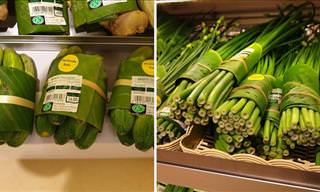
Instead of Plastic, These People Used Smart Alternatives
Check out 14 excellent examples of people and companies fighting the global plastic problem.

15 Small Easy Things You Can Do to Help the Environment
You don't have to be vegan and cancel civilization to help the environment. Small, but meaningful changes like these 15 will help as well

Scientists Develop Wrap That Determines if Food is Spoiled
Scientists at MIT have developed a biodegradable plastic-like wrap that changes color when food goes bad. Find out more…
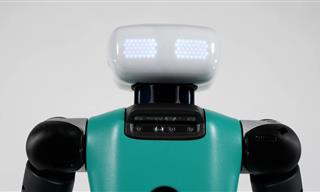
This Humanoid Robot May Join the Workforce Very Soon...
Meet Digit – a bipedal robot that's ready to join human workers at warehouses around the world as early as 2024.
 4:13
4:13
What Does Medicine ACTUALLY Do In the Body? Fascinating.
What really happens in our bodies when we take medicine, have you ever wondered? This video will answer your question.
 5:32
5:32
The Science Behind Why Laughter is the Best Medicine
They say laughter is the best medicine. But why exactly do we laugh?
 6:31
6:31
The Psychology Behind Why Some People Are Habitually Late
Now we finally know why some people are habitually late.
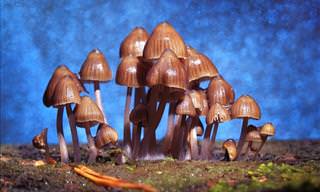
Researchers Claim This Ingredient Can Cure Depression!
A preliminary study has suggested that magic mushrooms may be able to soothe the symptoms of depression. Read here to find out more.
 8:14
8:14
What Would You Do if You Had an Extra Thumb?
This revolutionary invention has the potential to revolutionize the field of prosthetics.
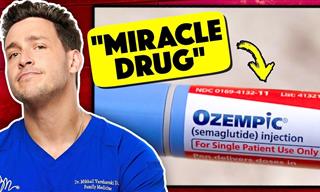 8:24
8:24
Why is Everyone Obsessed with This Weight-Loss Tool?
Ozempic has been touted as a wonder drug for weight loss in recent months. But what's the real truth behind it?

12 Earliest Versions of Tech Inventions We Use Every Day
Witness the evolution of 11 popular devices we use all the time by looking at how they all started...
 21:51
21:51
This Mind-Blowing Talk Explores the Nature of Reality
In this video, cognitive scientist, Donald Hoffman, attempts to answer this mind-blowing question in this incredible TED talk.
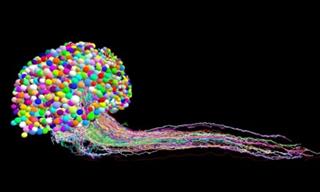
Incredible: First-Ever Complete Map of an Insect's Brain
This incredible project is the first to completely map the brain of an insect, a monumental undertaking even for such a small creature.

25 Pics Showing How People in the Past Imagined the Future
Let’s see how the people of the past imagined the future and find out if their fun predictions came true with these 25 vintage pictures

20 Incredible Inventions That We Have Completely Lost
Here are some of the most amazing ideas and inventions we have ever seen. But, sadly, all of them have been lost to science in the mysterious mists of history.

Incredible New Bionic Arm Fuses With Woman's Nerves
Karin's bionic hand is real sci fi, making her one of the first true cyborgs.
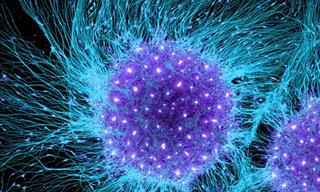
Ever Wonder What Life Is Like if We Zoom In All the Way?
A selection of some of the winning photographs from Nikon's yearly macro photography contest.

The Facts You Didn't Know About the Human Body...
Discover 120 fascinating and surprising facts about your body you may not have known. Going over most of the body parts, you will learn so much you never knew about the body we all use.
 2:23
2:23
Introducing the Astronauts That Were Just Launched Into Space
The two astronauts — veteran NASA fliers Bob Behnken and Doug Hurley are honored to have been on this flight. Let's get to know them!
 1:22
1:22
Are Smartphones Making Us Stupid? This Will Surprise You!
If you use a smartphone you need to see this!
 2:34
2:34
Let's Talk About Size, From Big to Huge.
an incredible discovery that leads us to a better and better understanding of these objects' true size.
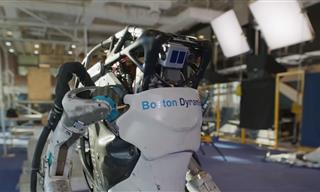 9:47
9:47
Behind the Scenes of the Human-Like Atlas Robot
In this video, we get a behind-the-scenes look at the development of the incredible Atlas robot.

25 Feats of Engineering that Leave Everyone Amazed
The amount of planning and sheer brain power it took to design and execute these structures, proving once again that there are true geniuses out there.
 5:13
5:13
Whatever Happened to that Hole in the Ozone Layer?
Let's embark on this enlightening journey to better understand our atmosphere's health.
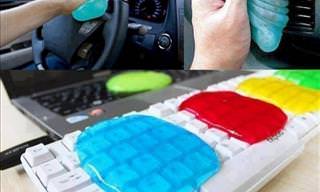
20 Amazingly Simple Inventions That Make Life Easier
Some wonderful inventions can fix some of the most annoying little problems that bug us every single day. Here are 20 of the most inventive ideas I've ever seen that I can't believe no one has invented before.
 16:55
16:55
Sleep Inventions: 16 Gadgets to Help You Doze Off
If you frequently struggle with sleep, then trying these amazing new sleep innovations could help change your life.

8 Lies We've Been Told About Electricity
These incorrect facts about electricity have been perpetuated long enough. It's time to disprove them.
 3:53
3:53
Are You a Late Sleeper? This Super Video Explains Why
Why is it that some people are late risers, and some are morning people? It's all down to our genetics. Have a look here to find out more.
 7:00
7:00
How To Be Sure Your Dog Adores You
10 scientific ways to know if your dog loves you

I Never Knew These Stunning Facts About Our Universe
If you thought you understood the universe, you'll be completely floored by this insane facts.

6 Signs That Someone is Listening on Your Cellphone Calls!
With technology advancing all the time, there is the ever-increasing chance of our phones being tapped. Here are 6 signs that your phone could be tapped.
 3:16
3:16
You Wouldn't Believe How Far Technology Has Come
Take a look at the advancements of technology in this video. Impressive.
 16:28
16:28
This Secret Invention Changed the Course of WW2
Let’s take a closer look at the proximity fuze, also called Vt Fuze, an invention that changed the course of the second World War.

These Ancient Inventions Have Got Scientists Stumped!
Here are 12 items from long ago which prove that our ancestors possessed knowledge and skills far more advanced than we once believed them to be.

17 Incredible Eye Facts You Have To See To Believe
They say the eyes are the window to the soul, and they also happen to be our windows to the world. Here are 17 insanely fascinating facts about eyes.

What Metals Do We Mine the Most? This Graph Shows All!
Did you know the world mined 2.8 billion tonnes of metals in 2021? Let’s discover what metals we mined the most.

10 Real-Life Technologies That Science Fiction Foretold
Sometimes even the wildest science-fiction predictions about the future come true.

6 Weird and Creepy Medical Tools of the Past
After seeing these weird and creepy medical devices of the past, you’ll be thankful you live in the 21st century. Take a look for yourself.

These Photos Show How Dependent We are On Smartphones
Technology has taken over and these funny (but true) photos help to drive this fact home.
 17:48
17:48
This Visual Shows the Science Behind the Shape of Rivers
A fascinating visual model that explains why and how rivers change their course.
 12:02
12:02
10 Incredible Animal-Inspired Robots
Let's meet some incredibly realistic robotic animals.
 1:44
1:44
The Accidental Discovery of the World’s First Antibiotic
Not too long ago, it was fairly common to die of the simplest of wounds due to bacterial infection. Penicillin changed everything.

5 Puzzling Mysteries That Science Finally Managed to Solve
These weird occurrences have puzzled humanity for decades, if not centuries. Finally, scientists solved them & the solutions are exciting...


